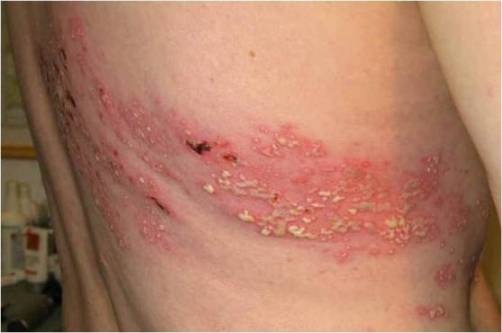Herpes Zoster Causes, Symptoms, Diagnosis and Treatment

What is Herpes Zoster?
Herpes Zoster is an infection caused by the varicella zoster virus, which causes the same virus that causes chickenpox. Even after the chickenpox infection is over, the virus can live in your nervous system for years before it reactivates as shingles. This type of virus infection is characterized by a red skin rash that can cause pain and burning. Belt gland usually appears as a strip of blisters on one side of the body, usually on the trunk, neck, or face.
Causes of Herpes Zoster
- People with active lesions that are caused by herpes zoster can spread VZV to susceptible people.
- People who had not had varicellae and never received chickenpox vaccine can be infected with VZV by someone infected with herpes zoster. When this happens, they are a risk to the development of varicella not herpes zoster.
- The virus spreads when a person has direct contact with the active herpes zoster lesions. The lesions are contagious until dry and crust over.
- People with active herpes zoster lesions should avoid contact with susceptible individuals in their household and in professional settings until their lesions dry and crusted.
Symptoms of Herpes Zoster
People with herpes zoster most commonly have
- A rash in one or two neighboring dermatomas (localized zoster).
- The rash most frequently appears on the trunk along a thoracic dermatome.
- The rash does not usually cross the body center.
- However, approximately 20% of people have skin rashes that overlap adjacent dermatomes.
Less frequently, the rash can be widespread and affect three or more dermatomes. This condition is called disseminated zoster. This usually happens only in persons with compromised or suppressed immune system. Disseminated zoster can be difficult to distinguish from varicella.
Diagnosis of Herpes Zoster
- Herpes zoster is suspected in patients with characteristic skin rash and sometimes in patients with typical pain in a dermatomal distribution. The diagnosis is usually based on the virtual pathognomic skin rash.
- If the diagnosis is ambiguous, the detection of multi-core giant cells can confirm the infection with a Tzanck test, but the Tzanck test is positive with herpes zoster or herpes simplex.
- Herpes simplex virus (HSV) can cause almost identical lesions, but unlike herpes zoster, HSV tends to return and is not dermatomal.
- Viruses can be differentiated by culture or PCR.
- Antigen detection from a biopsy sample may be useful.
Treatment of Herpes Zoster
Several antiviral drugs are available for the treatment of herpes zoster
- Acyclovir
- Valacyclovir
- Famciclovir
These drugs help to shorten the length and severity of the disease. But to be effective, they must be started as soon as possible after the rash appears.
- Analgesics (painkillers) can help the pain caused by gangrene.
- Wet compresses
- Calamine lotion
- Colloidal oat flakes can help alleviate some of the itch.
Related Articles:
Candidiasis Causes, Symptoms, Diagnosis and Treatment
Jacquest Erythema Causes, Symptoms, Diagnosis and Treatment
Yaws Causes, Symptoms, Diagnosis and Treatment
Molluscum Contagiosum Causes, Symptoms, Diagnosis and Treatment
Seborrheic Dermatitis Causes, Symptoms, Diagnosis and Treatment
Monkey Pox Causes, Symptoms, Diagnosis and Treatment
Myiasis Causes, Symptoms, Diagnosis and Treatment
Osteomyelitis Causes, Symptoms, Diagnosis and Treatment
Radiation Sickness Causes, Symptoms, Diagnosis and Treatment
Typhus Causes, Symptoms, Diagnosis and Treatment
By : Natural Health News




